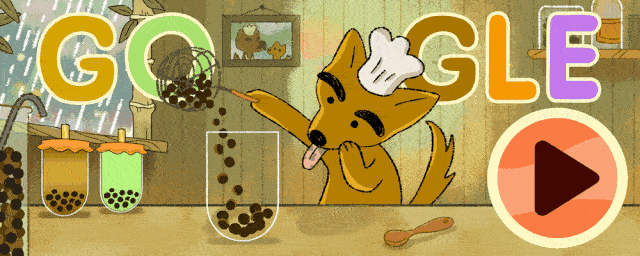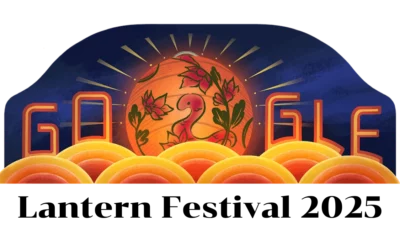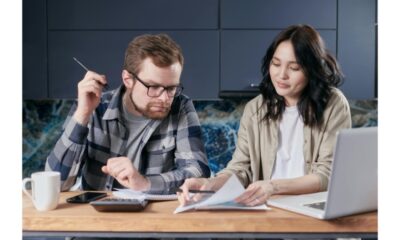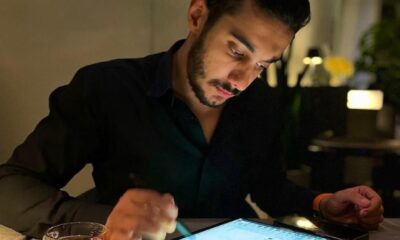Festivals & Events
Interesting and Fun Facts about Bubble Tea

Google, the world’s largest search engine, is celebrating Bubble Tea, also known as pearl milk tea, bubble milk tea, tapioca milk tea, boba tea, or boba; 珍珠奶茶; zhēnzhū nǎichá, 波霸奶茶; bōbà nǎichá) on January 29, 2023, with an animated mini-game Google Doodle. The following are some fun and interesting facts about bubble tea that you should need to know.
Quick Facts about Bubble Tea
- Alternative names:
- Boba
- Pearl milk tea
- Boba milk tea
- Boba tea
- Boba nai cha
- Tapioca tea
- Course: Drink
- Place of origin: Taiwan
- Region or state: Worldwide
- Serving temperature: Cold or hot
- Main ingredients: Tapioca, milk, creamer, brewed tea, sugar, and flavorings
20 Fun and Interesting Facts about Bubble Tea
- Bubble tea, also known as boba tea or black pearl tea, is a beverage made with milk, tea, and “bubbles,” which are chewy, gelatinous tapioca or fruit jelly candies.
- In Taiwan, where it originated, bubble tea is a popular beverage that is now enjoyed worldwide. In the middle of the 1980s, the city of T’ai-nan, Taiwan, was the birthplace of bubble tea.
- In the 1990s, Taiwanese immigrants brought it to the United States initially in California through regions like Los Angeles County. Since then, it has also spread to other countries with a large East Asian diasporic population. Since then, dozens of new versions of the drink have emerged, particularly in Taiwan and other East Asian countries like Singapore, Hong Kong, and Japan.
- Taro tea, brown sugar tea, and matcha green tea are all popular variations. Bubble tea is typically served with chewy tapioca balls, also known as “boba” or “pearls,” but it can also be served with other toppings like grass jelly, aloe vera, or red bean.
- It comes in many flavors and varieties, but pearl black milk tea and pearl green milk tea are the two most well-liked types. “Pearl” refers to the tapioca balls at the bottom of the cup.
- There are two competing stories of how bubble tea was discovered. One is associated with the Chun Shui Tang tea room (春水堂人文茶館) in Taichung. Liu Han-Chieh, the company’s founder, noticed that Japanese coffee was served cold in the 1980s, so she started serving Chinese tea cold there. His business flourished as a result of the new style of serving tea, which led to the establishment of multiple chains offering this beverage. Lin Hsiu Hui, the manager of product development for the company, said that in 1988, she made the first bubble tea by adding tapioca balls to her tea at a staff meeting and encouraging others to drink it. Everyone at the meeting enjoyed the beverage, which led to its inclusion on the menu. In the end, it became the franchise’s top-selling product.
- The Hanlin Tea Room (翰林茶館) in Tainan makes yet another claim for the invention of bubble tea. It claims that the white tapioca balls he saw in the Ah-bó-liâu (鴨母寮, or Yamuliao in Mandarin) local market were the inspiration for the creation of bubble tea in 1986. He later used these traditional Taiwanese snacks to make tea. “Pearl tea” is the result of this process.
- Chang Fan Shu, an entrepreneur, and former bartender, invented bubble tea in 1949 by developing a tea that was shaken in a martini mixer to produce a foamy surface. The result was a luxury item known as hand-shaken (shou yao) tea that was served cold and was not widely available to the majority of Taiwanese until the 1980s economic boom.
- Tu Zonghe, another businessman, added tapioca balls, or fen yuan, to green tea in 1986 and opened a tea shop in T’ainan. There have been different versions of the story about how this “bubble tea” came to be, but in any case, it was so popular that the first shop turned into a chain with locations across Taiwan and in North America.
- The name “boba nai cha,” or “boba tea,” comes from the fact that the recipe has expanded to include larger tapioca balls, which are now known as “boba.” As a result of this larger boba, a unique, extra-wide straw was developed so that they could be consumed with the drink without the need for a spoon.
- There are numerous flavors of bubble tea, most of which include black tea, green tea, oolong tea, and occasionally white tea. Black tea, coffee, and milk make up another variation known as yuenyeung, (鴛鴦), which is named after the Mandarin duck and originated in Hong Kong.
- In the 2000s, Chinese diaspora populations in cities like New York, London, and Berlin started drinking bubble tea. Since then, several chains have opened in Europe and the United States.
- It has also been featured on the menus of fast-food restaurant chains like Dunkin’ and McDonald’s.
- Bubble tea became increasingly popular throughout East and Southeast Asia in the 1990s. The bubble tea craze quickly spread among young people in places like Hong Kong, Mainland China, Japan, Vietnam, and Singapore.
- Starch and sugar are abundant in standard boba. As a result, many vendors offer sugar-free products.
- Although bubble tea can be made at home, Taiwanese typically purchase it from tea shops or street vendors as an after-school or after-work treat.
- New flavors, additions, and mixtures are still being experimented with in shops all over the world. The boba craze has spread to countries like Singapore, Japan, South Korea, and more thanks to traditional tearooms in Asia.
- The craze for bubble tea has extended beyond the beverage itself in recent years, resulting in the invention of numerous bubble tea-related dishes, including bubble tea ice cream, bubble tea pizza, bubble tea toast, bubble tea sushi, and bubble tea ramen, among others.
- Regardless of the flavor, include some bubbly balls made with fruit jelly or tapioca in the mix. Honeydew, matcha, raspberry, and mocha are all examples of flavors.
- For the occasion of Bubble Tea, Google featured an animated minigame Google Doodle on its homepage on January 29, 2023. On this day in 2020, Bubble Tea was officially announced as a new emoji due to its worldwide popularity.
Google Doodle for Celebrating Bubble Tea
On January 29, 2023, the latest homepage minigame from Google honors the simple pleasures of making bubble tea and enjoying it with friends.
In today’s interactive Google Doodle, which features Taiwan’s indigenous Formosan Mountain Dog and a crew of familiar Doodle characters, satisfy your craving and make a delicious bubble tea!
You play the role of a Formosan Mountain Dog who runs a bubble tea shop in the middle of a rainforest in the new Google Doodle minigame. In the game, making tea is easy because all you have to do to reach a certain line is fill the cup with each ingredient. You can receive up to three stars per customer if you stop on the line.
This fully hand-drawn bubble tea game features some familiar characters for fans of previous Google Doodle games. For instance, the adored “weather frog” mascot Froggy and the two feline heroines of Doodle Champion Island Games and Magic Cat Academy both make an appearance. You will be treated to some delightfully tranquil music that is accompanied by the rain’s sound.
In total, you will need to fulfill five orders before you close your business for the day. Each order will be harder than the one before it. Naturally, this Google Doodle didn’t forget the best thing about ordering bubble tea. Customers line up their straws and, in an oddly satisfying way, poke through the lid after finishing each drink.
-

 Business4 weeks ago
Business4 weeks agoHow to fill MSME Form 1? Step-by-Step Guide
-
Business4 weeks ago
From Marine to Chief: The Leadership Journey of Sean Mannix
-

 Gadget3 weeks ago
Gadget3 weeks agoAfter Grand Success on BLDC Ceiling Fan, Eff4 Is Launching Smart Bulb
-

 Festivals & Events4 weeks ago
Festivals & Events4 weeks agoGoogle Celebrates Cherry Blossom Season with Animated Doodle
-

 Business2 weeks ago
Business2 weeks agoPrakash and Kamal Hinduja: Driving Social and Environmental Change
-

 Sports4 weeks ago
Sports4 weeks ago2025 NASCAR Craftsman Truck Series Baptist Health 200 at Homestead-Miami Speedway: Race Preview, Prediction, Schedule, Entry List, Drivers to Watch and How to Watch
-
Education3 weeks ago
Fred DuVal: University Leadership as a Critical Resource for Climate Change Research and Life-Saving Solutions
-

 Health2 weeks ago
Health2 weeks agoThe Hinduja Brothers Commitment to Global Health: Empowering Communities Across Borders





















